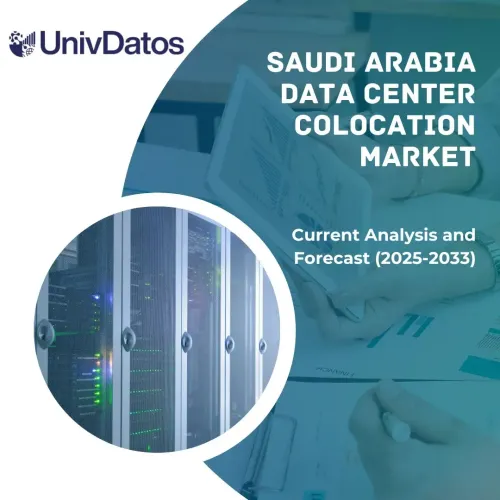- Home
- About Us
- Industry
- Services
- Reading
- Contact Us
Geophysical Software Service Market: Current Analysis and Forecast (2023-2030)
Emphasis on Survey Type (Land, Aerial, And Marine); Software (On Premises, And Software as Service (SaaS)); Application (Agriculture, Oil & Gas, Water, Exploration, Others) and Region/Country.

The Geophysical Software Service Market was valued at 11.74 billion in 2022 and is expected to grow at a steady rate of around 13.9% in the forecasted period (2023-2030) due to the increasing demand for oil and gas exploration. The geophysical software service market refers to the industry of providing software services for geological exploration and analysis. This includes software solutions for seismic data processing, interpretation, and visualization, as well as other types of geophysical data such as gravity, magnetic, and electrical surveys. Moreover, advancements in technology are further fueling the market. The development of new technologies such as machine learning and artificial intelligence (AI) have enabled more sophisticated analysis of large datasets, leading to improved accuracy and efficiency in geophysical data interpretation. These advancements have made it easier for companies to access and analyze vast amounts of data, driving up demand for geophysical software services.
Some of the major players operating in the market include CGG; TGS; Earth Science Analytics; Explor.; Emerson Electric Co.; Fugro; PGS; SLB; Geophysical Software Solutions; SGS Société Générale de Surveillance SA.
Insights Presented in the Report
“Among survey type, the marine segment holds largest share of the market during forecast period.”
Based on survey type, the market is categorized as land, aerial, and marine. Among these, the marine segment is currently leading the market this is because many offshore oil and gas exploration activities require accurate seafloor mapping and subsurface imaging, which in turn drives demand for advanced marine geophysical software services. Also, other segments have seen significant growth in recent years due to increasing adoption of geophysical technology across various industries.
“Among software, the software as service (SaaS) segment holds largest share of the market during forecast period.”
Based on software, the market is bifurcated into on premises, and software as service (SaaS). Among these, the SaaS segment is currently leading the geophysical software service market due to the growing adoption of cloud-based solutions. The adoption of cloud-based solutions has become increasingly popular among oil and gas exploration companies due to several advantages such as ease of deployment, scalability, reduced maintenance costs, and remote access capabilities.
Geophysical Software Service Market Report Coverage

“North America to hold a significant share in the market.”
North America is currently leading the market due to several factors such as early adoption of new technologies, high levels of investment in R&D, and the presence of established players in the region. Moreover, North America is home to many well-established providers of geophysical software services, which has helped drive up demand for these services. Companies like Schlumberger, Halliburton, and CGG have long histories of offering high-quality solutions to clients across various industries.
Reasons to buy this report:
- The study includes market sizing and forecasting analysis validated by authenticated key industry experts.
- The report presents a quick review of overall industry performance at one glance.
- The report covers an in-depth analysis of prominent industry peers with a primary focus on key business financials, product portfolio, expansion strategies, and recent developments.
- Detailed examination of drivers, restraints, key trends, and opportunities prevailing in the industry.
- The study comprehensively covers the market across different segments.
- Deep dive regional level analysis of the industry.
Customization Options:
The global geophysical software service market can further be customized as per the requirement or any other market segment. Besides this, UMI understands that you may have your own business needs, hence feel free to contact us to get a report that completely suits your requirements.
Table of Content
Research Methodology for the Geophysical Software Service Market Analysis (2023-2030)
Analyzing the historical market, estimating the current market, and forecasting the future market of the global geophysical software service market were the three major steps undertaken to create and analyze the adoption of geophysical software service market in major regions globally. Exhaustive secondary research was conducted to collect the historical market numbers and estimate the current market size. Secondly, to validate these insights, numerous findings and assumptions were taken into consideration. Moreover, exhaustive primary interviews were also conducted, with industry experts across the value chain of the global geophysical software service market. Post assumption and validation of market numbers through primary interviews, we employed a top-down/bottom-up approach to forecasting the complete market size. Thereafter, market breakdown and data triangulation methods were adopted to estimate and analyze the market size of segments and sub-segments of the industry pertains to. Detailed methodology is explained below:
Analysis of Historical Market Size
Step 1: In-Depth Study of Secondary Sources:
Detail secondary study was conducted to obtain the historical market size of the geophysical software service market through company internal sources such as annual reports & financial statements, performance presentations, press releases, etc., and external sources including journals, news & articles, government publications, competitor publications, sector reports, third-party database, and other credible publications.
Step 2: Market Segmentation:
After obtaining the historical market size of the geophysical software service market, we conducted a detailed secondary analysis to gather historical market insights and share for different segments & sub-segments for major regions. Major segments are included in the report as survey type, software, and application. Further country-level analyses were conducted to evaluate the overall adoption of testing models in that region.
Step 3: Factor Analysis:
After acquiring the historical market size of different segments and sub-segments, we conducted a detailed factor analysis to estimate the current market size of the geophysical software service market. Further, we conducted factor analysis using dependent and independent variables such as various survey types, software, and application geophysical software service market. A thorough analysis was conducted of demand and supply-side scenarios considering top partnerships, mergers and acquisitions, business expansion, and product launches in the geophysical software service market sector across the globe.
Current Market Size Estimate & Forecast
Current Market Sizing: Based on actionable insights from the above 3 steps, we arrived at the current market size, key players in the global geophysical software service market, and market shares of the segments. All the required percentage shares split, and market breakdowns were determined using the above-mentioned secondary approach and were verified through primary interviews.
Estimation & Forecasting: For market estimation and forecast, weights were assigned to different factors including drivers & trends, restraints, and opportunities available for the stakeholders. After analyzing these factors, relevant forecasting techniques i.e., the top-down/bottom-up approach were applied to arrive at the market forecast for 2030 for different segments and sub-segments across the major markets globally. The research methodology adopted to estimate the market size encompasses:
- The industry’s market size, in terms of revenue (USD) and the adoption rate of the geophysical software service market across the major markets domestically
- All percentage shares, splits, and breakdowns of market segments and sub-segments
- Key players in the global geophysical software service market in terms of products offered. Also, the growth strategies adopted by these players to compete in the fast-growing market.
Market Size and Share Validation
Primary Research: In-depth interviews were conducted with the Key Opinion Leaders (KOLs) including Top Level Executives (CXO/VPs, Sales Head, Marketing Head, Operational Head, Regional Head, Country Head, etc.) across major regions. Primary research findings were then summarized, and statistical analysis was performed to prove the stated hypothesis. Inputs from primary research were consolidated with secondary findings, hence turning information into actionable insights.
Split of Primary Participants in Different Regions

Market Engineering
The data triangulation technique was employed to complete the overall market estimation and to arrive at precise statistical numbers for each segment and sub-segment of the global Geophysical Software Service market. Data was split into several segments & sub-segments post studying various parameters and trends in the areas of survey type, software, and application in the global Geophysical Software Service market.
The main objective of the Global Geophysical Software Service Market Study
The current & future market trends of the global Geophysical Software Service market were pinpointed in the study. Investors can gain strategic insights to base their discretion for investments on the qualitative and quantitative analysis performed in the study. Current and future market trends determined the overall attractiveness of the market at a regional level, providing a platform for the industrial participant to exploit the untapped market to benefit from a first-mover advantage. Other quantitative goals of the studies include:
- Analyze the current and forecast market size of the Geophysical Software Service market in terms of value (USD). Also, analyze the current and forecast market size of different segments and sub-segments.
- Segments in the study include areas of survey type, software, and application.
- Define and analysis of the regulatory framework for the Geophysical Software Service market industry.
- Analyze the value chain involved with the presence of various intermediaries, along with analyzing customer and competitor behaviors of the industry.
- Analyze the current and forecast market size of the Geophysical Software Service market for the major region.
- Major countries of regions studied in the report include Asia Pacific, Europe, North America, and the Rest of the World.
- Company profile of the Geophysical Software Service market and the growth strategies adopted by the market players to sustain in the fast-growing market.
- Deep dive regional level analysis of the industry
Frequently Asked Questions FAQs
Q1: What is the current market size and growth potential of the global Geophysical Software Service market?
Q2: What are the driving factors for the growth of the global Geophysical Software Service market?
Q3: Which segment has the largest share of the global Geophysical Software Service market by Application?
Q4: Which region will dominate the global Geophysical Software Service Market?
Q5: Who are the key players operating in the global Geophysical Software Service Market?
Related Reports
Customers who bought this item also bought










